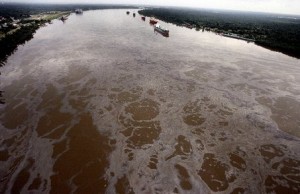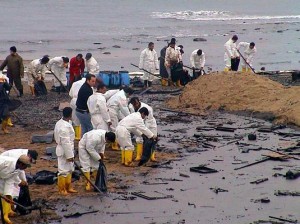Grassroots mapping the Gulf oil spill with balloons and kites – via Kickstarter. This is not David and Goliath: it’s a small community outnumbered and outgunned by big agencies and entities with deeper pockets and deeper resources. So what did they do? They effectively crowdsourced satellite photography — or at least aerial photography. And they went a bit bigger in order to crowdsource the fund-raising, too.
We are a group of citizens and activist mappers who are documenting the effects of the BP oil spill in the Gulf Coast with a set of novel DIY tools — we send inexpensive cameras up in helium balloons and kites, and take aerial photos from up to 1500 ft. The data we’re gathering will be vital in both the environmental assessment and response, as well as in the years of litigation following the spill. All the imagery we capture is released into the public domain and is free to use or redistribute. See our Flickr photo pool for more of the incredible imagery volunteers are bringing in.
We need support to keep a supply of helium, and to pay for gas, kites, cameras, and protective gear for our volunteers. We’ve already captured a great deal of amazing imagery which is available online:
http://grassrootsmapping.org/ http://grassrootsmapping.org/gulf-oil-spill Louisiana Bucket Brigade, our collaborators and the local HQ, are sending volunteers out to affected coastal sites almost daily, and conducting training sessions for new volunteers in New Orleans and elsewhere along the gulf coast. Our imagery is being published across the web – not just photographs, but stitched maps like these:
xxx

